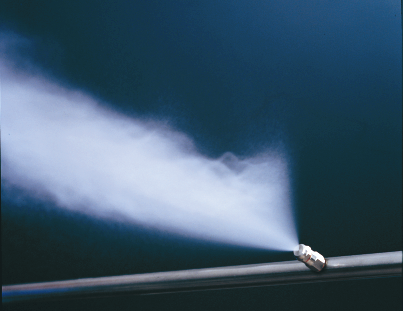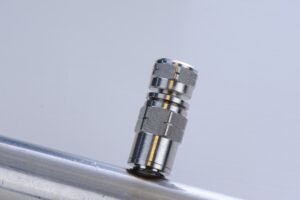High pressure fogging can control humidity and temperature in poultry sheds. Val-Co explains how. This article was first published in the Innovation supplement to Poultry Business in May 2021
Due to climate change resulting in longer periods of hot weather, it has become more important to effectively cool poultry sheds. Growers have a responsibility to provide positive animal-welfare conditions, and over-heated birds are unhappy and unproductive.
There are several options available to control the shed climate, most popular are pad cooling and high pressure fogging. While both use the same principle of evaporative cooling, there are some economic benefits to fogging. The system itself is more affordable and requires less seasonal maintenance, giving growers a return on their investment in as little as one heatwave.
High pressure fogging systems atomise water to a fine fog which evaporates, cooling down the air. With this adiabatic process the warmth in the air evaporates the fog, lowering the air temperature and raising the relative humidity. In Western Europe, the fresh incoming air is often drier than the shed air. The low relative humidity during warm periods allows it to increase through fogging will not cause respiratory problems or make the litter wet. This difference in relative humidity is important to absorb and expel the humidity produced by the chickens and cools the environment in the process.
With high pressure fogging, both temperature and humidity can be adequately controlled, and it decreases the quantity of airborne particles, dust, and possible infections in the air.
With proper distribution of the nozzles and fog in the shed, an even and fast evaporation will result in a uniform temperature in the shed. It is not necessary to place the nozzles directly near the inlets, the ventilation system is operating with relatively high air movement through the shed. When using tunnel inlets during cooling, with disproportional fresh air intake through the gable of the shed, it is important to adjust distribution of the nozzles accordingly. This means that the nozzles in the shed need to be placed proportionally to the inlet air capacity.
High quality and more durable high pressure fogging systems use nozzles completely made from high grain stainless steel. The unique characteristic of the VAL-CO PolAIR is this almost complete stainless-steel nozzle producing the finest fog with the highest possible cooling effect without any precipitation.
The nozzles have a nozzle pin and an anti-leak shut off, eliminating any possible dripping after the system is switched off. The nozzle pin is powered by the water pressure. During fogging the pin spins rapidly, decreasing the water droplets into a fine fog. At the same time, it prevents building up of calcium and prevents contamination of the nozzle opening. The only plastic part is the tiny shut off ball, which is spring charged to close the nozzle after the pressure has dropped. This prevents leakage from the tubing and wet spots on the floor or crop.



